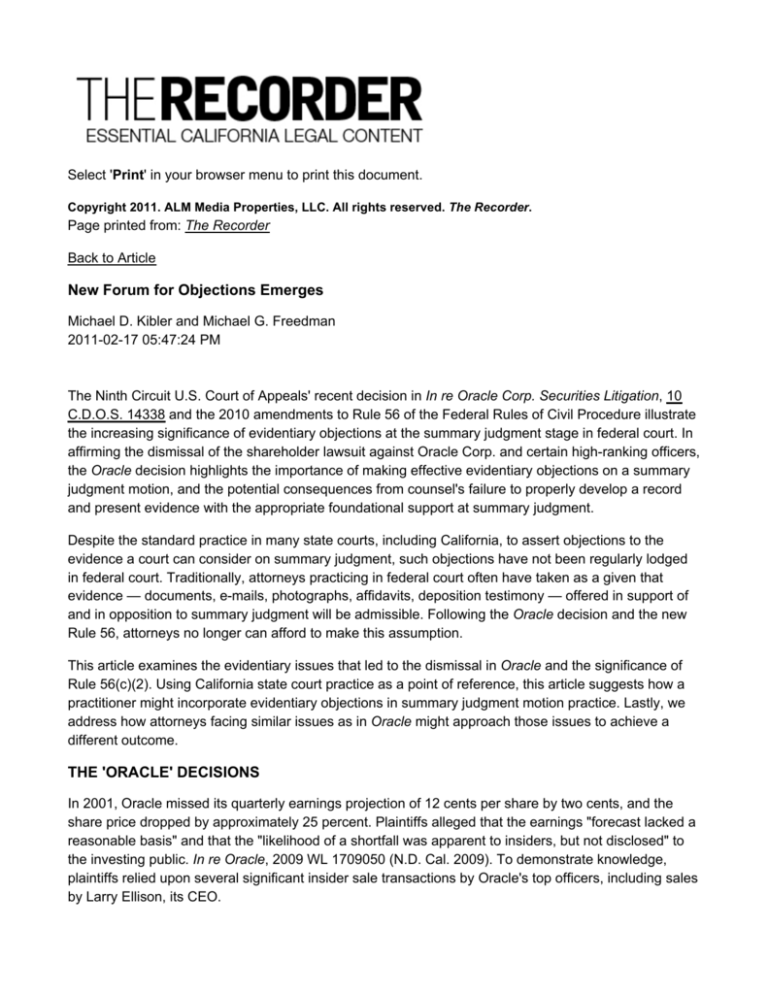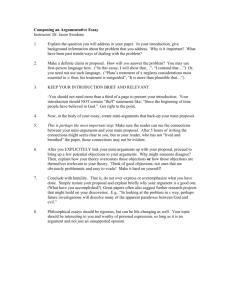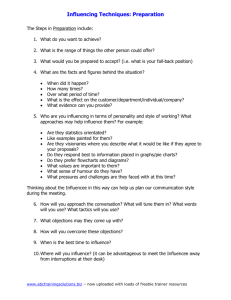
Select 'Print' in your browser menu to print this document.
Copyright 2011. ALM Media Properties, LLC. All rights reserved. The Recorder.
Page printed from: The Recorder
Back to Article
New Forum for Objections Emerges
Michael D. Kibler and Michael G. Freedman
2011-02-17 05:47:24 PM
The Ninth Circuit U.S. Court of Appeals' recent decision in In re Oracle Corp. Securities Litigation, 10
C.D.O.S. 14338 and the 2010 amendments to Rule 56 of the Federal Rules of Civil Procedure illustrate
the increasing significance of evidentiary objections at the summary judgment stage in federal court. In
affirming the dismissal of the shareholder lawsuit against Oracle Corp. and certain high-ranking officers,
the Oracle decision highlights the importance of making effective evidentiary objections on a summary
judgment motion, and the potential consequences from counsel's failure to properly develop a record
and present evidence with the appropriate foundational support at summary judgment.
Despite the standard practice in many state courts, including California, to assert objections to the
evidence a court can consider on summary judgment, such objections have not been regularly lodged
in federal court. Traditionally, attorneys practicing in federal court often have taken as a given that
evidence — documents, e-mails, photographs, affidavits, deposition testimony — offered in support of
and in opposition to summary judgment will be admissible. Following the Oracle decision and the new
Rule 56, attorneys no longer can afford to make this assumption.
This article examines the evidentiary issues that led to the dismissal in Oracle and the significance of
Rule 56(c)(2). Using California state court practice as a point of reference, this article suggests how a
practitioner might incorporate evidentiary objections in summary judgment motion practice. Lastly, we
address how attorneys facing similar issues as in Oracle might approach those issues to achieve a
different outcome.
THE 'ORACLE' DECISIONS
In 2001, Oracle missed its quarterly earnings projection of 12 cents per share by two cents, and the
share price dropped by approximately 25 percent. Plaintiffs alleged that the earnings "forecast lacked a
reasonable basis" and that the "likelihood of a shortfall was apparent to insiders, but not disclosed" to
the investing public. In re Oracle, 2009 WL 1709050 (N.D. Cal. 2009). To demonstrate knowledge,
plaintiffs relied upon several significant insider sale transactions by Oracle's top officers, including sales
by Larry Ellison, its CEO.
Page 2 of 4
During discovery, the district court imposed a discovery sanction on the defendants based on the failure
to preserve certain evidence, which permitted an inference at trial that "the spoliated evidence would
demonstrate Ellison's knowledge of any material facts that plaintiffs could otherwise establish." Despite
this handicap, defendants moved for summary judgment based, in part, on plaintiffs' inability to show
fraud.
Defendants raised more than 80 evidentiary objections to evidence proffered by plaintiffs in opposition
to summary judgment, focusing primarily on plaintiffs' reliance on analyst reports and newspaper
articles to prove that defendants actually made false statements about Oracle's new products, the
earnings forecast and the effect of the economic downturn.
The district court granted defendants' motion for summary judgment, holding that plaintiffs failed to
create a genuine issue as to whether Oracle's forecast lacked a reasonable basis and whether several
intraquarter statements were false or misleading (in addition to ruling on certain loss causation
arguments). Significantly, the district court sustained defendants' evidentiary objections, finding that
many of the documents plaintiffs offered to show material issues of fact for trial constituted hearsay with
respect to the narrow issue that Oracle officials made specific fraudulent statements. The district court
explained that plaintiffs failed to respond to defendants' objections and failed to suggest hearsay
exceptions that would allow the statements by Oracle officials contained in analyst reports and
newspaper articles to be admitted into evidence.
Notwithstanding plaintiffs' argument that they had "preemptively addressed" the evidentiary objections,
the Ninth Circuit affirmed the grant of summary judgment and held that the district court did not abuse
its discretion in excluding the evidence. The court explained that the burden rested squarely on
plaintiffs to demonstrate admissibility: "It behooves litigants," the court admonished, "to resist the
temptation to treat judges as if they were pigs sniffing for truffles." 627 F.3d at 386. The court explained
that plaintiffs should have been able to "glean" material issues of fact supporting securities fraud from
the 2.1 million documents produced during discovery. Had plaintiffs done so, the adverse inference
would apply. "Plaintiffs' problem here lies in the dearth of admissible evidence to show fraud."
FRCP RULE 56(C)(2)
Less than a month after the Ninth Circuit's decision in Oracle, amendments to the Federal Rules of Civil
Procedure took effect. Rule 56(c)(2), entitled "Objection that a Fact Is Not Supported by Admissible
Evidence," is a new addition: "A party may object that the material cited to support or dispute a fact
cannot be presented in a form that would be admissible in evidence." According to the advisory
committee notes, this objection is intended to function "much as an objection at trial, adjusted for the
pretrial setting." As such, "[t]he burden is on the proponent to show that the material is admissible as
presented or to explain the admissible form that is anticipated."
Rule 56(c)(2) does not state how such objections should be made or responded to. For example,
neither the rule nor the advisory committee notes explain whether evidentiary objections should be
included in the summary judgment briefs or in separate pleadings. In California state courts, where
such evidentiary objections are common, it is standard practice for parties to submit separate pleadings
setting forth arguments concerning the admissibility of key items of evidence.
Page 3 of 4
COMMON EVIDENTIARY DISPUTES
Summary judgment is necessarily considered on a paper record. As witnessed in California state
courts, this often leads to admissibility disputes concerning hearsay and lack of foundation. Affidavits
and depositions raise unique hearsay issues in state court practice because they can be inadmissible
at trial. Regardless, these documents generally will be considered on summary judgment so long as the
witness will be available to testify at trial. Therefore, the summary judgment record must include
evidence regarding the availability of the witness to testify. However, if the only witness who might
testify to a particular fact at trial is barred from testifying due to a privilege, for example, then material
reflecting witness' trial testimony will not suffice to create a genuine issue at the summary judgment
stage (with certain exceptions).
Correspondence and electronically stored information can raise similar hearsay issues, in addition to
other authentication issues. The appropriate manner to submit a document in support of or opposition
to summary judgment in state court practice is to attach the proffered evidence to an affidavit from
someone with personal knowledge as to its genuineness and authenticity. Such documents may also
be authenticated, or a foundation for their admissibility established, through deposition questions or
written discovery responses.
Once the record regarding specific evidence is established during discovery, affidavits explaining the
"admissible form that is anticipated" are generally sufficient to lay foundations on summary judgment.
To preserve a record for appeal, California state court practitioners typically attempt to make a record of
their objections and responses both in writing and at oral argument, particularly when addressing key
evidence in the case.
LESSONS FOR FEDERAL PRACTICE
In Oracle, plaintiffs lost in part due to their failure to develop a proper foundation for the admissibility of
the reports and articles they offered in opposition to summary judgment. A party might overcome this
hurdle in future cases by considering admissibility issues early in the discovery process. For example,
targeted deposition questions, interrogatories or requests for admissions in the Oracle case might have
led to foundational evidence supporting certain hearsay exceptions, such as business records,
ratification of the statements by the company or officers, or the "catch-all" hearsay exception.
Additionally, recordings or notes taken of the statements made, or testimony, or notes from other
people present at the time the statements were made to the analyst or reporter, could have helped
establish the reliability of the documents. Plaintiffs in Oracle failed in assuming that the district court
would consider such reports for the truth of the matters asserted in the reports, that Oracle's executives
actually made the statements, and that the court would assume that the defendants' alleged statements
found in the reports and articles would find another way into evidence at trial.
While plaintiffs in Oracle had a variety of arguments available at the summary judgment phase, which
may have allowed the case to proceed to trial, they failed to present and support the arguments with
"reliable" (admissible) evidence that may have been developed through investigation and discovery. It
is a fair criticism that such evidentiary disputes increase the burdens on litigants at summary judgment
and may complicate the discovery process. Regardless, these disputes may become more common
following the 2010 amendments to Rule 56. However, Rule 56(c)(2)'s requirement that parties come
Page 4 of 4
forward with admissible evidence at summary judgment ensures that district courts will base casedispositive decisions only on the evidence that could have been or will be admitted at trial.
Michael Kibler is a litigation partner with Simpson Thacher & Bartlett in Los Angeles who frequently
represents clients in securities and shareholder actions. He can be reached at mkibler@stblaw.com.
Michael Freedman is a litigation associate with Simpson Thacher, also in the Los Angeles office. He
can be reached at mfreedman@stblaw.com
In Practice articles inform readers on developments in substantive law, practice issues or law firm
management. Contact Vitaly Gashpar with submissions or questions at vgashpar@alm.com.
Reprinted with permission from the February 21, 2011 issue of The Recorder. © 2011 ALM Media
Properties, LLC. Further duplication without permission is prohibited. All rights reserved.







